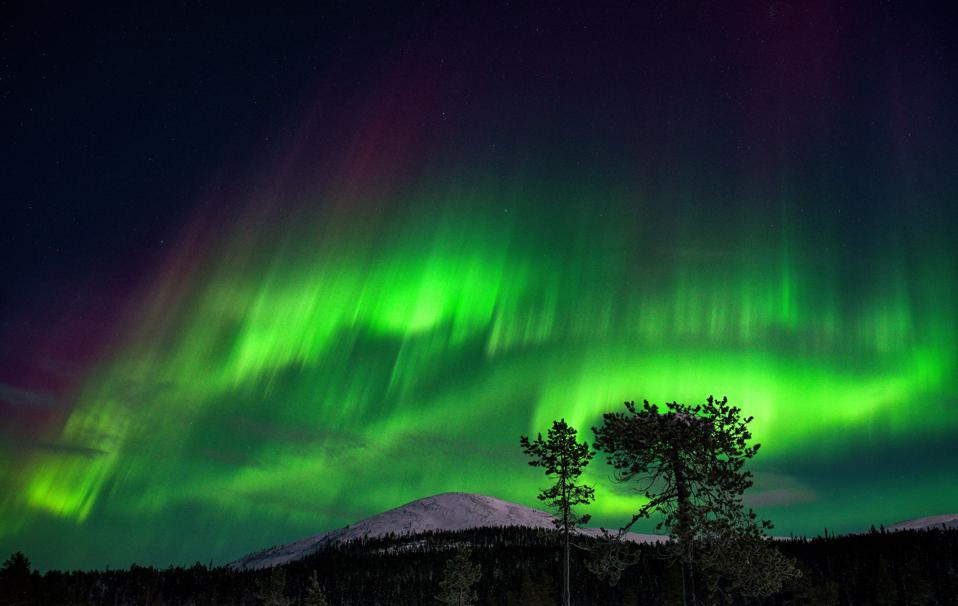A couple of years ago I was in Saariselkä in Finnish Lapland watching a rather disappointing display of the Northern Lights while standing outside my hotel under a clear sky. The greenish-looking clouds close to the northern horizon are known as a “forest fire” display. “You should go inside now,” said the hotelier after about an hour. “They won’t come again tonight.”
I completely ignored her, stood outside for three hours more and saw the most fantastic display of my life, before it eventually clouded over. I even saw the rare aurora corona.
Having read widely about the Northern Lights I knew they were the very definition of unpredictable—and no hotelier could tell me otherwise. All she was really sharing with me was that she always went to bed around midnight so never saw the aurora during the small hours.
However, I will soon need to update my aurora-hunting skills because new research suggests that they may soon be predictable—and from just looking at the Sun during the day.
Published in the Monthly Notices of the Royal Astronomical Society, a study from scientists in Russia, Germany, Austria and Croatia reveals a new method to predict geomagnetic storms directly from solar observations.
The authors say their results make it possible to increase the lead warning times from hours to days. That’s important, because the solar wind—a stream of electrons, protons and helium nuclei that is hurled at our planet—can sometimes be dangerous to astronauts, satellites and to power grids.
This so-called “space weather” originates from coronal holes on the Sun, dark regions with low-density plasma in the Sun’s ultra-hot corona. These cause geomagnetic storms—and they result in aurorae.
They’re famously erratic, but the new research presents a new way of forecasting them simply from observing these coronal holes.
Using coronal holes to predict the strength of a geomagnetic storm, the paper shows that the magnetic field from a coronal hole propagating from Sun to Earth is preserved in more than 80% of cases.
As well as using the magnetic field derived from solar observations, “this approach opens a possibility to provide earlier polar aurora forecasts,” said Tatiana Podladchikova, associate professor at the Skoltech Center for Digital Engineering, research co-author of the study, in an email. “However, one should take into account other factors affecting the boundaries of the polar oval, such as behavior of a capricious solar wind, weather and clouds and city lighting conditions.”
The Northern (and Southern) Lights are caused by those charged particles from the Sun being channeled along the magnetic field lines to Earth’s magnetic poles, where they excite oxygen and nitrogen there. “The radiation of excited atoms paints the sky with multi-colors and ignites the aurora—and the polar oval exists permanently, 24 hours per day,” said Podladchikova. “The Earth is at the center of a gigantic electricity station—a ring current starts flowing around the Earth, weakening the Earth’s magnetic field and a magnetic storm covers our planet.”
So, I was right—the aurora are always there, in theory. Soon we may be able to pinpoint exactly when to stand outside and watch the sky glow green and red. I hope it’s not cloudy that night.
Wishing you clear skies and wide eyes.

